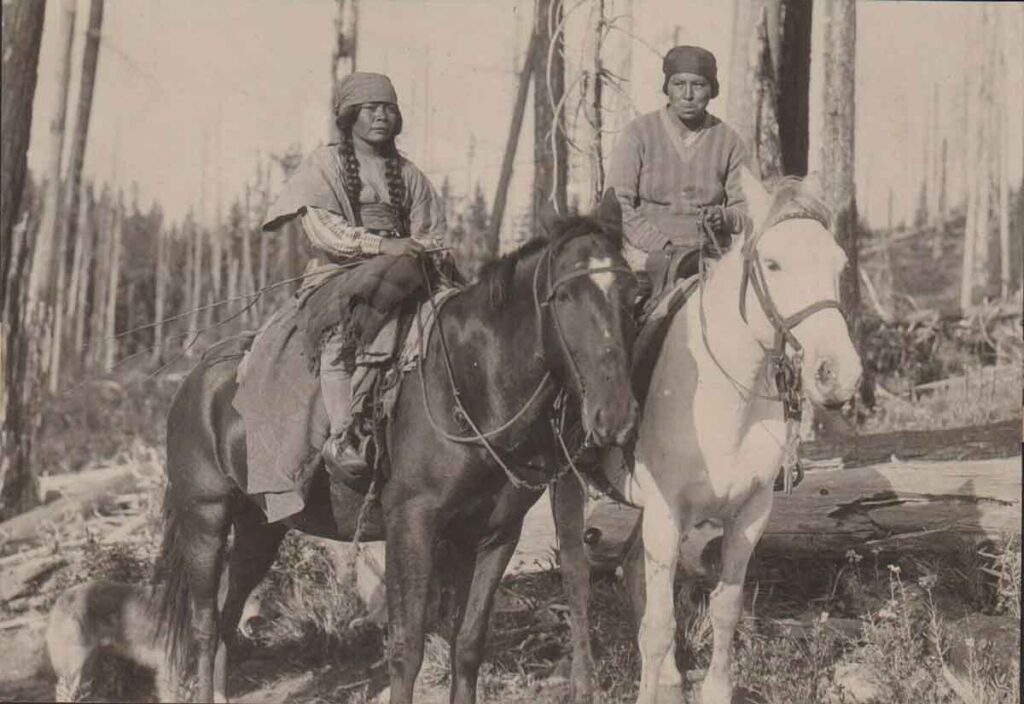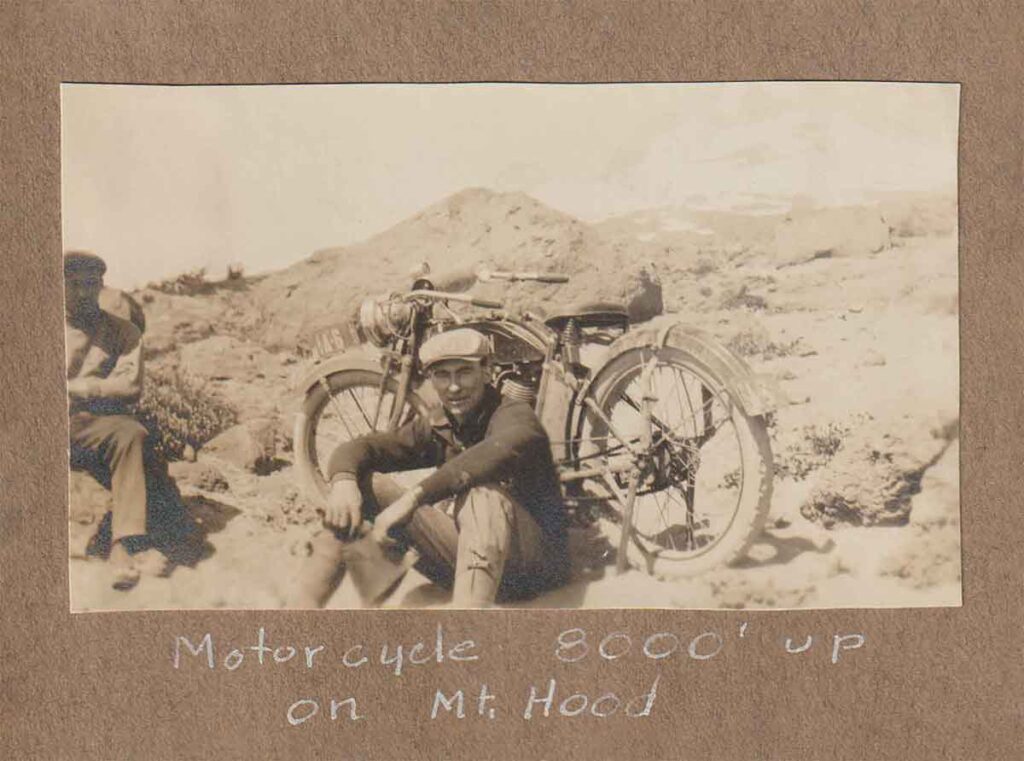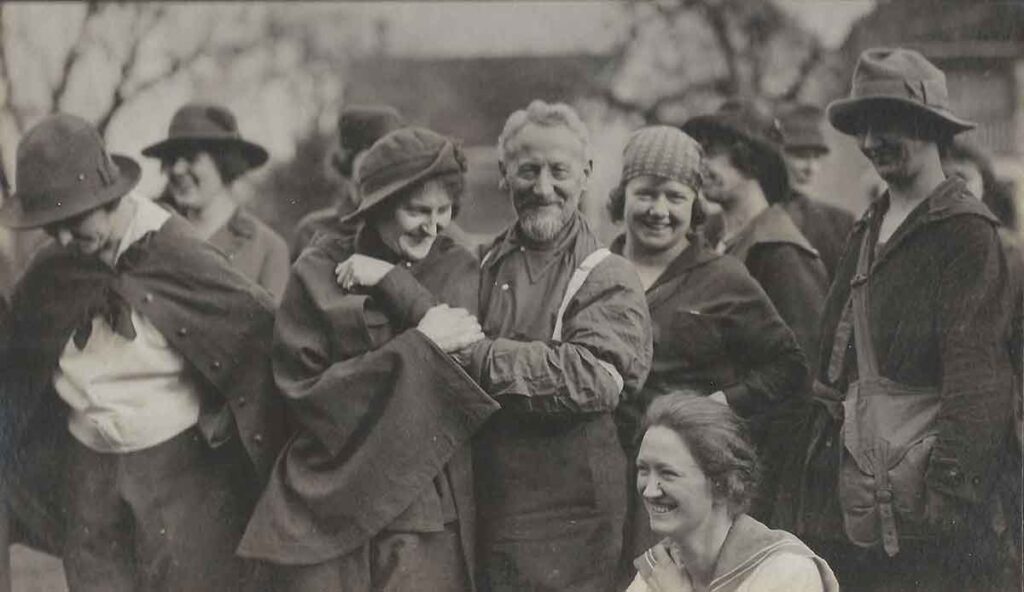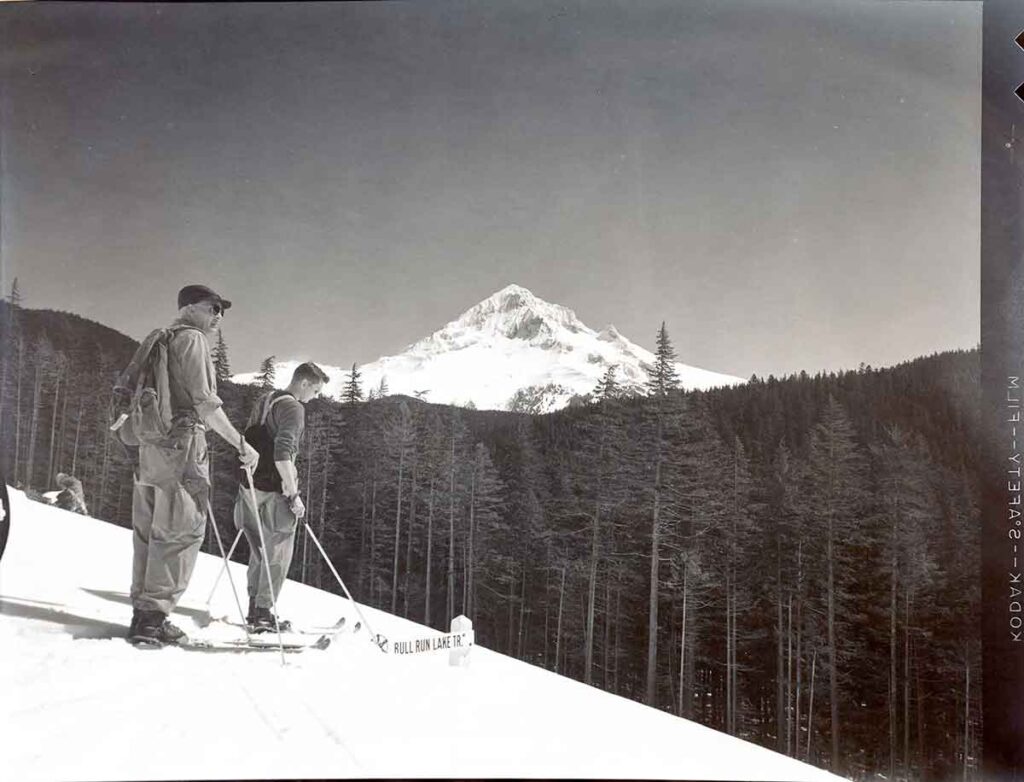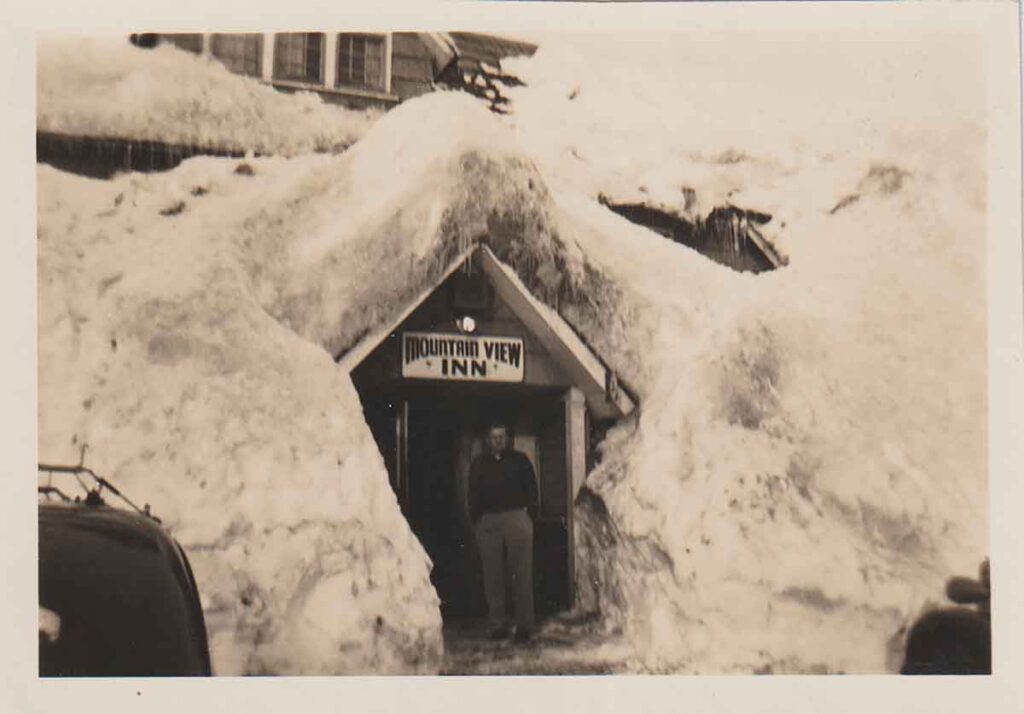For generations the native people would come each season from all directions between Spring and Autumn to stay and live their lives here on Mount Hood.
Motorcycle 8000′ Up On Mt. Hood
Axel Kildahl Drives Machine Over Snow and Ice 7600 Feet Above Government Camp
Adolph Aschoff’s Humor
The following account of the sense of humor of the legendary Adolph Aschoff, from Marmot Oregon, is from an entry to The Mountain Magazine in the early 1970’s.
Lolo Pass Ski Trip
Lolo Pass, on the west side of Mount Hood takes a route that goes from Zigzag, on the southwest side of the mountain, to the Hood River Valley on the north side.
The Mountain View Inn
The Mountain View Inn was originally the home of Lena Little, wife of pioneer homesteader Francis C. Little. The building was relocated from its original place to the main road through Government Camp.

